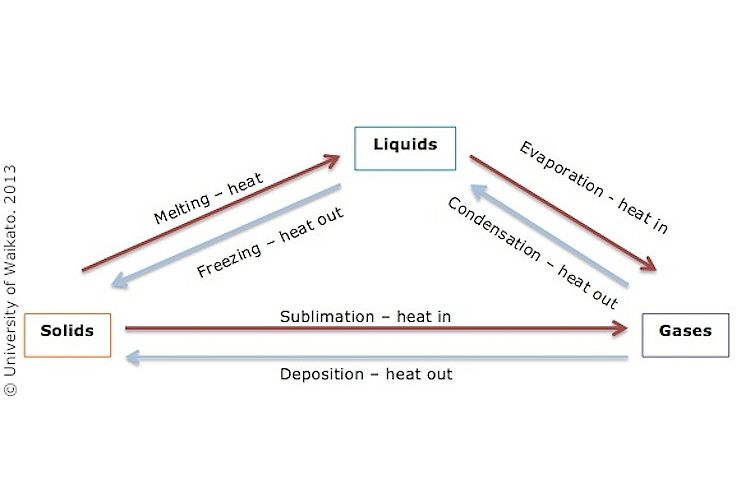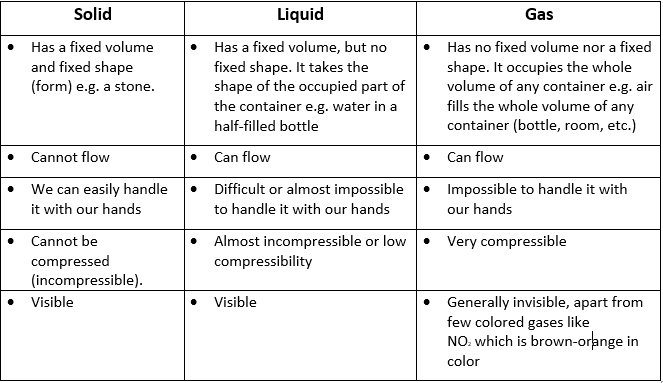Substances and matter, natural or fabricated, exist in different appearances called states of matter.
Questions:
- Indicate the most common states of substances or matter that we find in our daily life and their relationship, by drawing a concept diagram.
- What are the characteristics or properties that differentiate those states?
- What is the origin of the differences between those common states of matter?
- Explain how heating affects the states of matter?
Solutions:
- The most common states of matter we find in our daily life are: solid, liquid, and gas and their relationship is represented in the image below.

Image Source: Science Learning Hub
-
When a solid is heated, it passes from solid state to liquid. The process is called melting. The reverse process is called freezing or solidification. However, some solids pass from solid state to gaseous state without passing through liquid state, the process is then called sublimation. The reverse process is called deposition.
-
When a liquid is heated, it passes from liquid state to gas, the process is called boiling or vaporization. When the process occurs naturally without heating, the process is called evaporation. The reverse process is called condensation.
2. The distinctive properties of the 3 states of matter are shown in the following table:
3. The origin of those differences in properties is the force of attraction that holds particles of the matter together:
-
In solids, there are strong forces of attraction between particles that keep them in their spatial positions.
-
In liquids, the forces of attraction between particles are relatively weak and this allows the particles to move around and to slide one over another but remaining together.
-
In gases, there are no or almost no attraction forces between particles, they are free from one another and can move freely.
4. Heating affects the state of matter, as the temperature increases, the particles tend to separate one from another. In other words, heating increases the movement of the particles (kinetic energy) and decreases the forces of attraction between the particles.
Whereas cooling decreases the kinetic energy of the particles and increases the forces of attraction between the particles and this affects the state of matter accordingly as explained and shown in the image above.
![Problem #2: States of Matter [Solved]](/content/images/size/w2000/2021/01/anastasia-taioglou-CTivHyiTbFw-unsplash.jpg)
